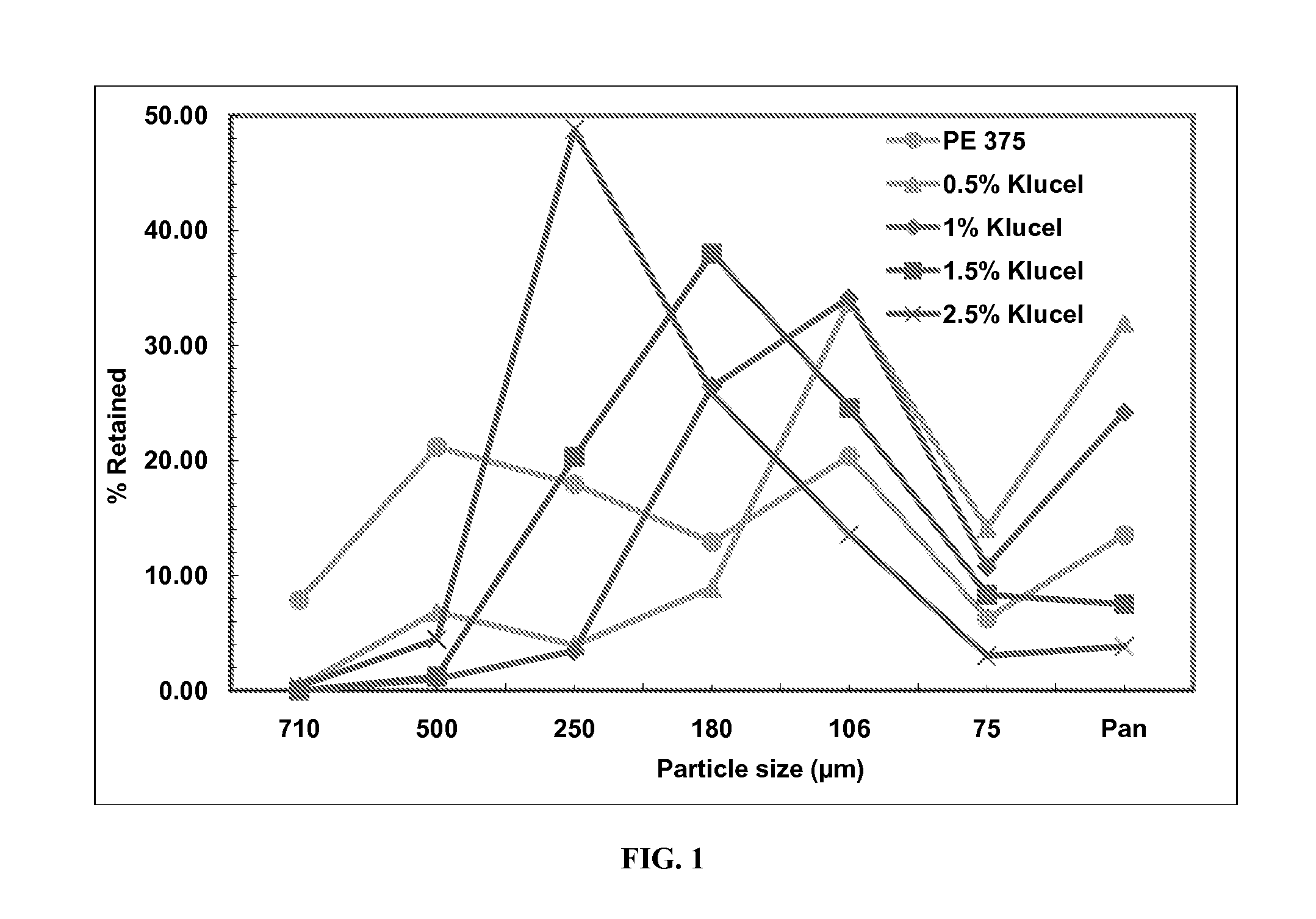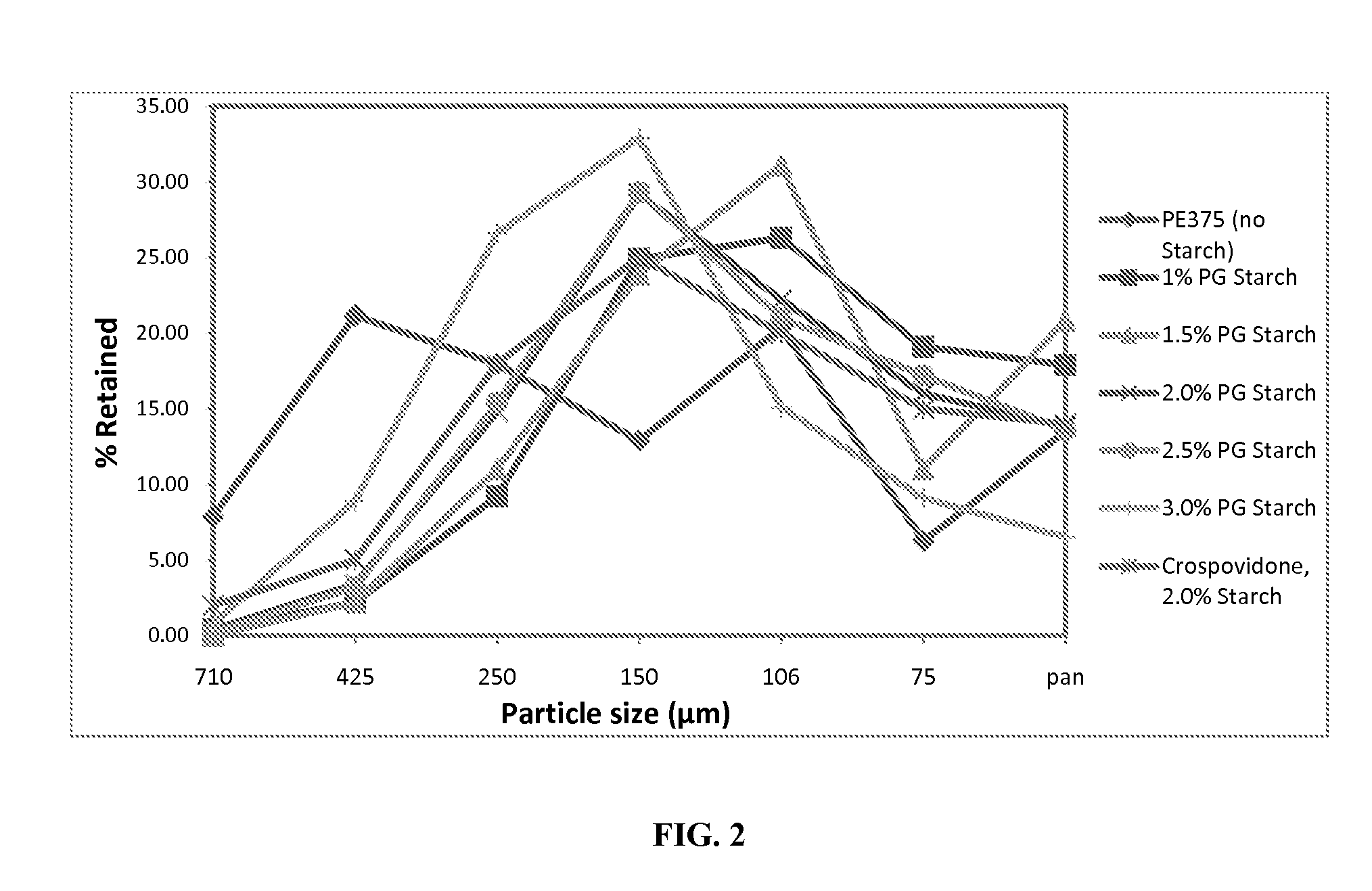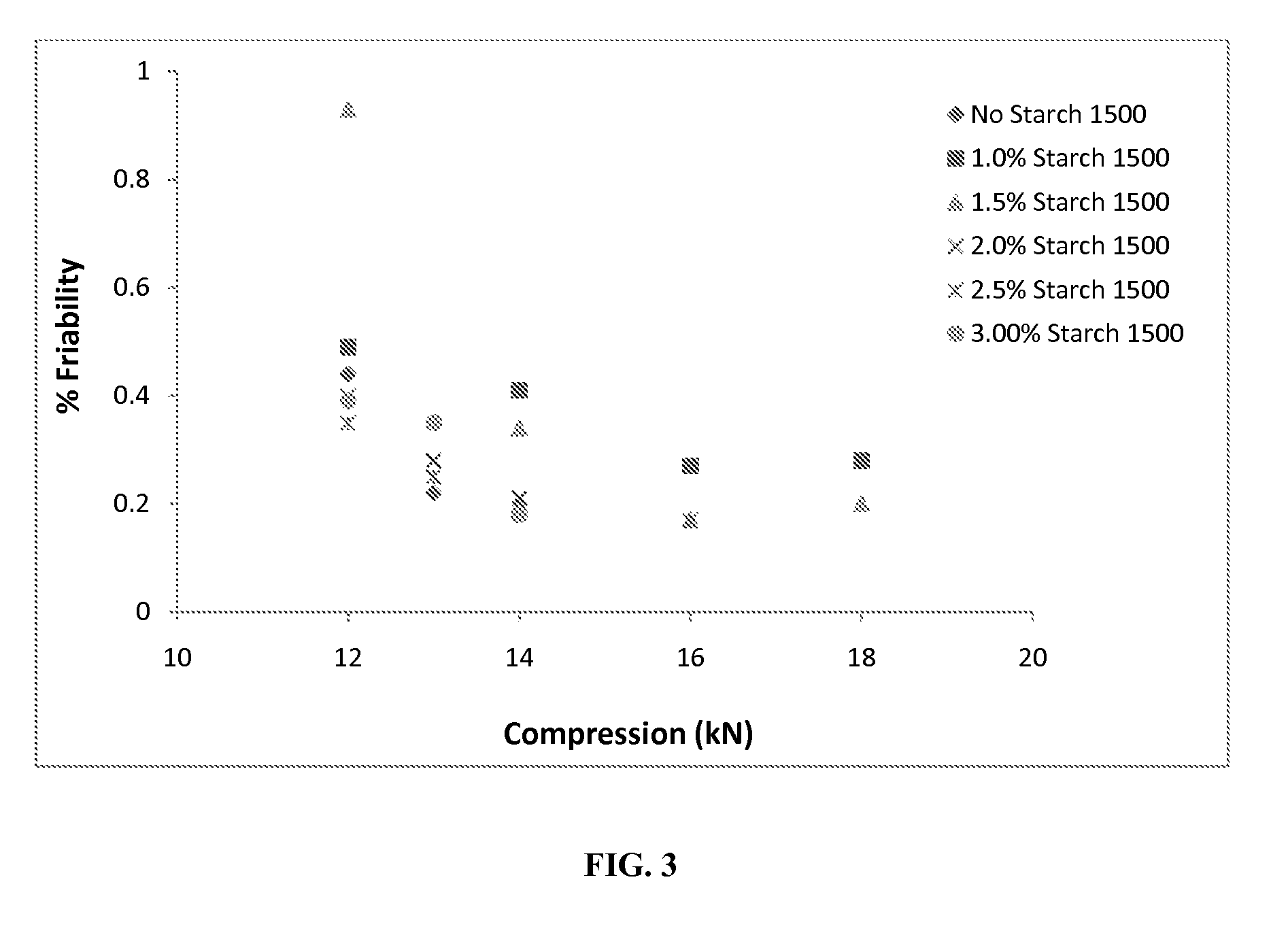Rapidly dispersing granules, orally disintegrating tablets and methods
a technology of granules and tablets, applied in the field of pharmaceutical compositions, can solve the problems of inability to take drugs on time in the dosage prescribed, non-adherence to dosing regimens, and inability to take drugs on time, and achieve the effect of rapid dissolution and adequate mechanical strength
- Summary
- Abstract
- Description
- Claims
- Application Information
AI Technical Summary
Benefits of technology
Problems solved by technology
Method used
Image
Examples
example 1
Orally Disintegrating Tablets
[0084]Aspartame (0.67 kg or 0.45% by weight of the tablet), S.D.Grape flavor (0.83 kg or 0.55%) and Crospovidone XL-10 (10.5 kg or 7%) are blended for 10 min in a 2 cu-ft V-blender and passed through a Comil®equipped with a 20 mesh screen at 1400 rpm. The required amounts of acetaminophen microcapsules (41.17 kg or 27.45%), rapidly dispersing (RD) microgranules (96.82 kg or 64.55%), and the pre-blend are blended in the 10 cu-ft blender as per the established procedures. Subsequently, these compression mixes are compressed into 160 mg ODT tablets weighing approximately 620 mg using a Hata tablet press-Matsui Exlub system at 25 rpm and at an average magnesium stearate flow of 2.34 volts (equivalent to a flow rate of 5 g per min). Tablets of each lot are produced for about 30 min at a compression force of 14, 18, 20, 22, 25 and 30 kN. A longer tableting run (up to 4 hrs is also performed at 21-22 kN compression force to evaluate tablet weight and hardness v...
example 1a
RD Microgranules Comprising Crospovidone and Klucel
[0110]Hydroxypropylcellulose, Klucel LF (90 g) is slowly added to purified water in a stainless steel container while continuously stirring to dissolve. The Glatt GPCG 5 is set up with a top spray product bowl, spray gun, and peristaltic pump. D-mannitol with a median particle size of 95 wt. %. The dried material (Formula A) with an LOD of 0.3% is passed through a #20 mesh screen to achieve >95% total yield. Granulations are also performed at different Klucel contents (e.g., 2.5%, 0.5%, and 1.0% by weight of the granulation; see Table 4 for actual compositions). The particle size distributions that are obtained in each of the four granulations are measured using a Sonic shifter while the bulk and tap density values are also determined. From these values, percent compressibility values are calculated. Table 4 and FIG. 1 present the particle size distribution data for the 4 RD microgranule batches comprising mannitol / crospovidone / Kluc...
example 1b
Orally Disintegrating Tablets
[0111]Crospovidone, microcrystalline cellulose (Avicel PH101), sucralose, and strawberry flavor are mixed in a polyethylene bag and passed through 40 mesh screen. The screened material is blended with the required amounts of acetaminophen microcapsules (lot#1198-JMC-106), rapidly dispersing granules comprising hydroxypropylcellulose (Klucel LF) as the binder (Formula K (1.0%), Formula K (1.5%), or Formula K (2.5%)) and / or rapidly dispersing granules without a binder (from Example 1.F) in a 0.25 cu-ft V-blender for 10 min (see Table 5 for 250 mg Acetaminophen ODT compositions and tableting properties).
PUM
| Property | Measurement | Unit |
|---|---|---|
| Time | aaaaa | aaaaa |
| Length | aaaaa | aaaaa |
| Length | aaaaa | aaaaa |
Abstract
Description
Claims
Application Information
 Login to View More
Login to View More - R&D
- Intellectual Property
- Life Sciences
- Materials
- Tech Scout
- Unparalleled Data Quality
- Higher Quality Content
- 60% Fewer Hallucinations
Browse by: Latest US Patents, China's latest patents, Technical Efficacy Thesaurus, Application Domain, Technology Topic, Popular Technical Reports.
© 2025 PatSnap. All rights reserved.Legal|Privacy policy|Modern Slavery Act Transparency Statement|Sitemap|About US| Contact US: help@patsnap.com



